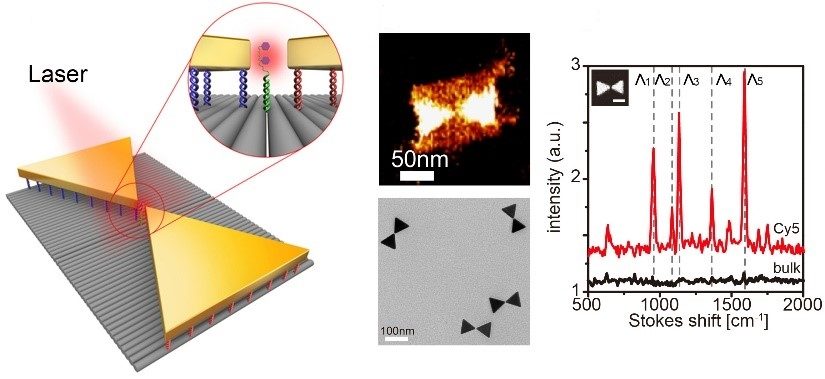Skip to content

- We use DNA, RNA and other biomolecules as a programmable nanoscale building block to construct designer nanoarchitectures with increasing complexity in two- and three-dimensional spaces. We are also interested in the hierarchical engineering of sophisticated nanodevices. Another important aspect of the research is the creation of self-assembling structures that are dynamic, allowing one to trigger cascading molecular events using either small or biological molecules as logical inputs.
- Through rational design, DNA molecules can be assembled into nanostructures with well-defined shapes and uniform sizes. The programmability and spatial addressability of DNA nanostructures allow the organization of imaging probes, targeting groups and therapeutic agents. Combining with the biocompatibility of nucleic acids, DNA-based diagnosis and payload delivery systems are developed for in vitro and in vivo studies.
- Metallic and semiconducting nanoparticles possess unique optoelectrical properties. The organization power of DNA makes it possible to position discrete numbers of nanoparticles in 2D and 3D spaces with nanometer precision, which offers an ideal platform to study their properties. Emerging photonic properties are expected from nanoparticle architectures designed for photonic device applications. DNA-directed nanoparticle assembly in conjunction with surface-patterning techniques provides a promising route for massively parallel nanodevice fabrication. Through DNA templated synthesis, construction of customized conducting polymers patterns can be realized. This will open a new way for nanoelectronics.
